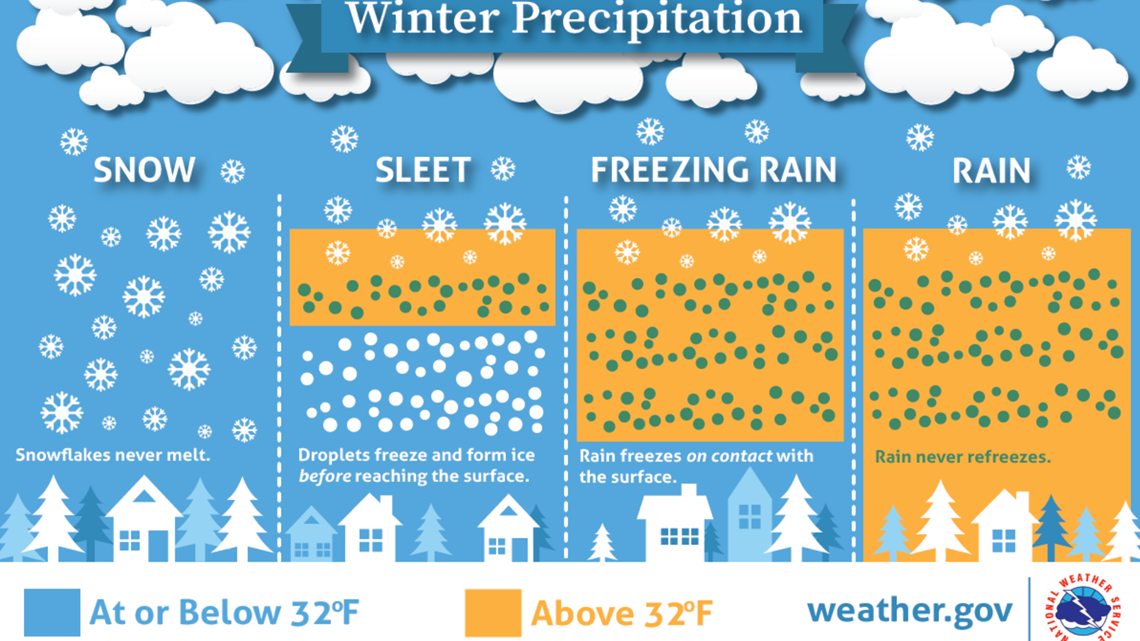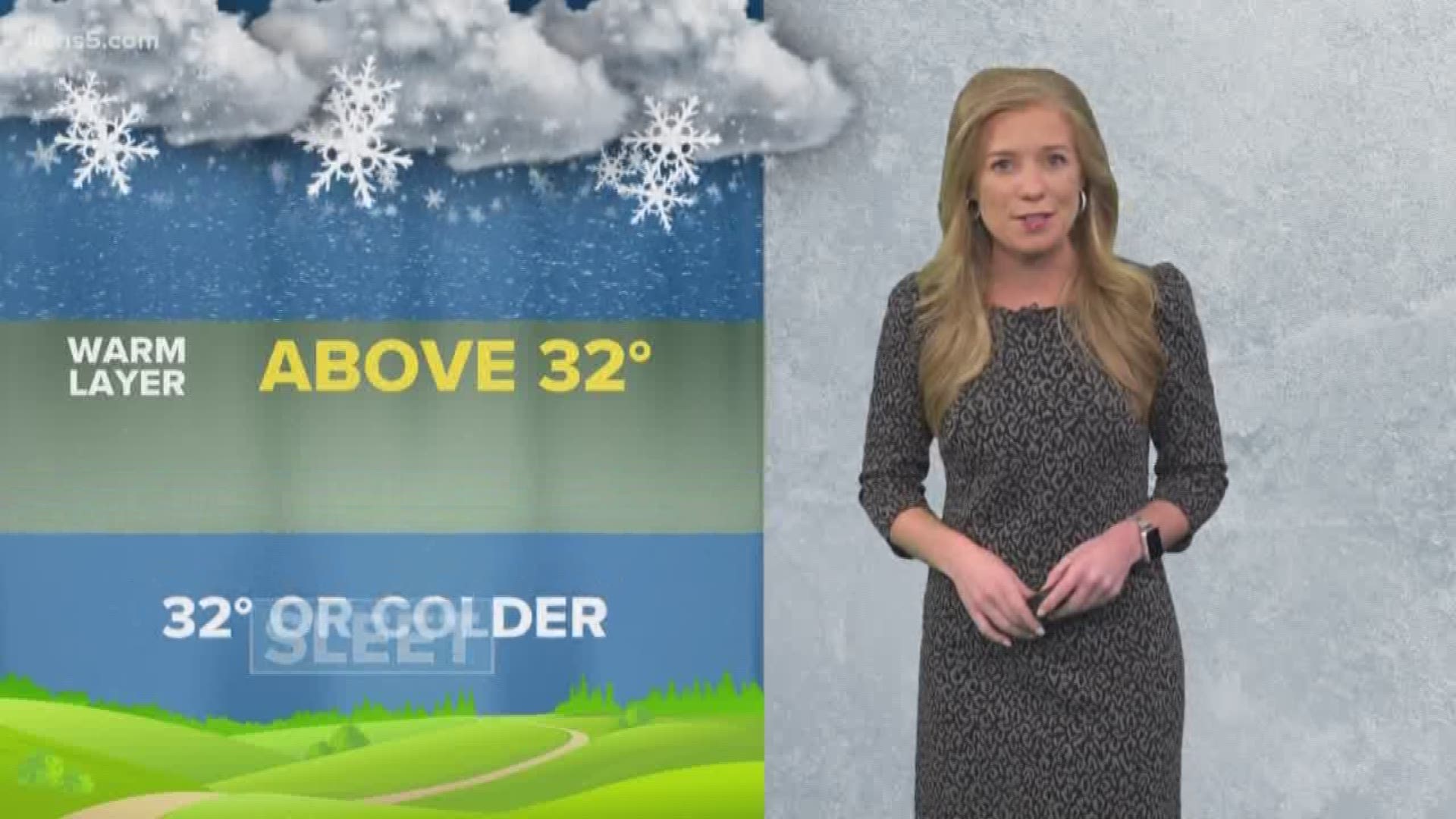SAN ANTONIO — It's that time of year when many storm systems roll through and we see several types of precipitation, like snow, freezing rain and sleet.
The temperature throughout the atmosphere and saturation within the dendritic growth zone (where ice crystals form) play a huge role in winter precipitation types.
In fact, every precipitation type starts as snow, as it falls from the cloud in the troposphere. If the temperature stays at or below freezing (32 degrees) throughout the entire atmosphere, snow will fall and never melt.
However, if there is a thin warm layer in the atmosphere, the snow will melt to rain, it hits cold air again and refreezes into sleet.
The most impactful winter precipitation type would be freezing rain, when most of the atmosphere is above freezing except for a thin cold layer at the surface. Rain in the atmosphere will hit cold air and freeze on the ground or objects. Freezing rain can cause slick spots on roadways and bridges.


Ice can have more impacts than icy spots on roads. As ice piles up on tree branches, it can increase the weight 30 times.
Just a half an inch of ice on power lines could add 500 pounds and that could cause power outages.
Freezing rain can also have major impacts on vegetation, leading tree limbs to snap and possibly even bring down whole trees in large amounts.
Sleet can also be very impactful, leading to hazardous driving conditions when large amounts fall.
RELATED:
If sleet covers a roadway, it can make conditions similar to driving on marbles and it can take a long time for it to go away. Sleet will melt and refreeze as temperatures rise above and fall below the freezing point. This will lead to more of a black ice situation over time, similar to what freezing rain can cause.
Finally, snow can also be extremely impactful with large amounts, but in smaller amounts, like what we are more used to in San Antonio, it won't cause as many issues. Heavy snow can shut down a whole city, but unlike sleet and freezing rain, it is fairly easy to remove snow from roadways. The problem with snow is when it melts and refreezes, leading to a "black ice" situation.
Despite a Winter Weather Advisory in place until 6 a.m. on Tuesday for parts of the Hill Country, no major impacts are expected from winter precipitation.
Don't forget you can download the KENS 5 app for the latest news and weather information each day while you are on the go.
PEOPLE ARE ALSO READING:

